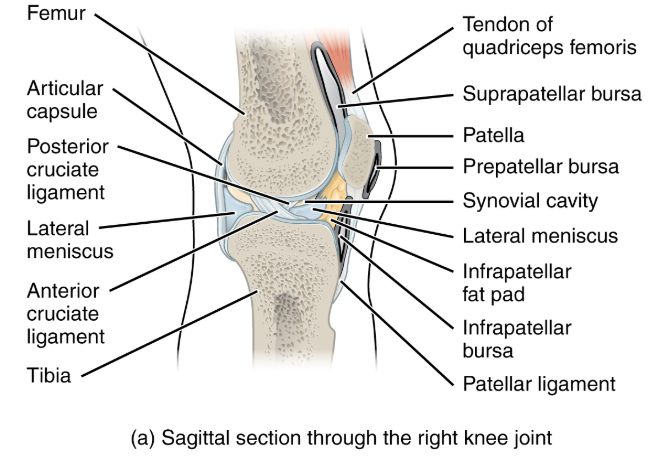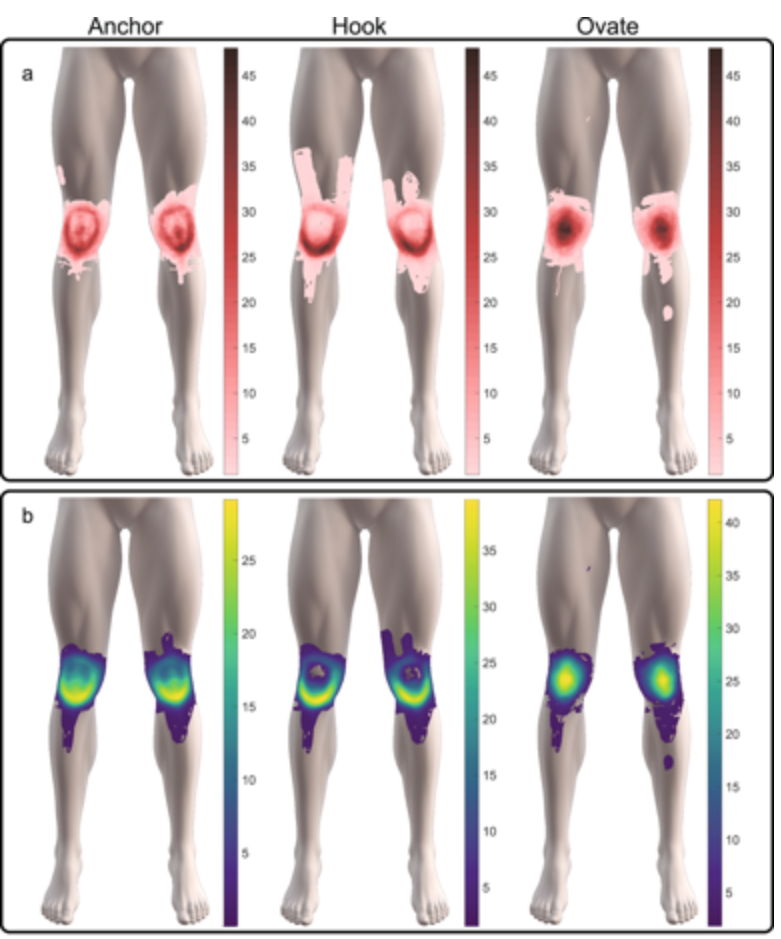Some symptoms present more of a challenge to doctors than others.
Perhaps the most hated is "abdominal pain." Just about anything can cause it. Maybe it's something relatively benign, like constipation or food poisoning. Or maybe it's something more serious, like appendicitis. Or maybe it's something potentially lethal, like an aneurysm or pancreatic cancer. Who knows?
Knee pain is similar. Though it doesn't appear so from the surface, the knee is the largest, most complex joint in the body. In fact, what we think of as a single joint is actually three-joints-in-one. The thigh bone (femur) forms two separate joints with the largest bone of the lower leg (tibia), and the kneecap (patella) also forms a joint with the thigh bone.
 But that's not all. There are also ligaments, tendons, fatty pads, menisci, and fluid-filled sacs called bursae, all of which facilitate movement and/or provide joint stability. (See image. Credit: OpenStax.) And most of these structures can cause pain if something goes wrong with them. That's why identifying the cause of knee pain isn't always straightforward.
But that's not all. There are also ligaments, tendons, fatty pads, menisci, and fluid-filled sacs called bursae, all of which facilitate movement and/or provide joint stability. (See image. Credit: OpenStax.) And most of these structures can cause pain if something goes wrong with them. That's why identifying the cause of knee pain isn't always straightforward.
So a team of researchers decided to use digital body maps to gain a better understanding of knee pain. They asked 299 patients suffering from pain in or around their kneecaps (called patellofemoral pain, or PFP) to draw precisely where they were experiencing pain on a tablet computer.
Using this data, they were able to cluster patients into one of three groups (named "Anchor," "Hook," and "Ovate") based on the shape of the knee pain distribution. (See below.)

Interestingly, the authors found that the shape of knee pain distribution was not related to a person's age, sex, or pain intensity. Underlying causes were not examined.
Knee pain is a tricky problem, and any progress toward understanding its etiology should come as relief to the 1 in 5 adults who may experience it.
Source: Shellie A. Boudreau, et al. "Distinct patterns of variation in the distribution of knee pain." Scientific Reports 8, Article number: 16522. Published: 8-Nov-2018. doi: 10.1038/s41598-018-34950-2




